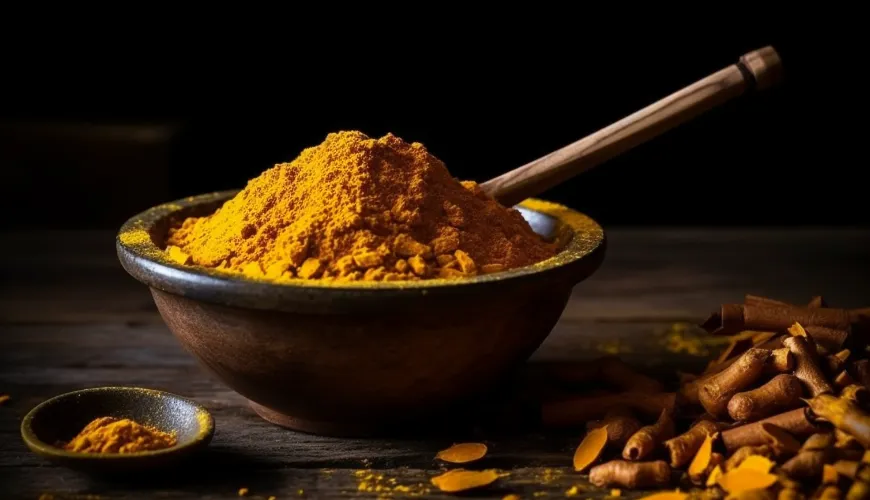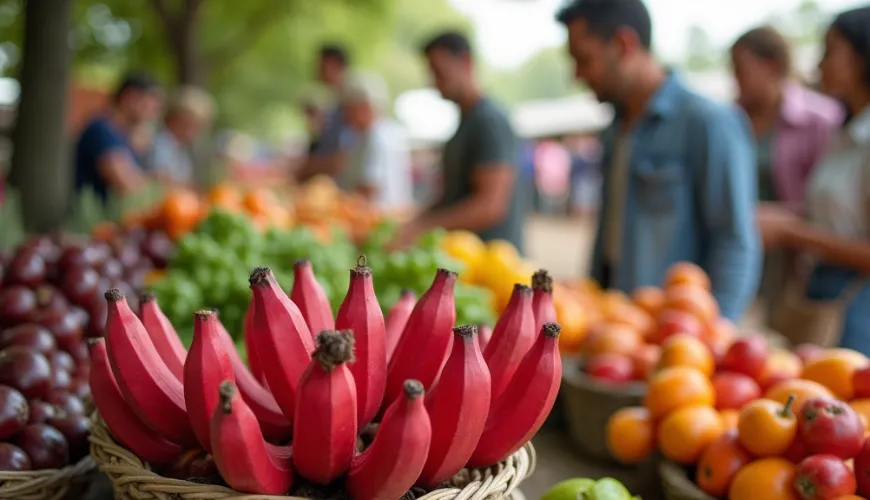
The red banana is here and brings unique taste experiences

The Red Banana is Gaining Popularity in Czech Homes
Among the supermarket aisles and vegetable markets, we occasionally spot something that stands out from the standard offerings. While yellow bananas are a staple in every kitchen, their red cousin still appears as a curiosity. Although in some parts of the world, the red banana is an everyday fruit, in the Czech Republic it is just starting to find its way into the regular diet. And yet, it is a fruit full of flavor, nutrition, and surprises that deserves attention not only from gourmets but also from those who care about a healthy lifestyle.
How Does the Red Banana Differ from the Classic?
At first glance, the difference is clear. While the ordinary banana is yellow, the red banana has a peel colored in dark red to purplish. Inside, however, awaits a surprise – the flesh is not white but has a delicate pinkish to salmon hue. But that's not the only difference. Its taste is creamier, sweeter, with a subtle undertone of raspberries or berry fruits, making it an ideal choice for those who enjoy sweet delicacies without added sugar.
The red banana originally hails from Southeast Asia and Central America, but today it is also cultivated in parts of Africa, the Caribbean, and South America. Thanks to globalization, it is reaching the European market, including the Czech one, where it has become popular, especially among health-conscious customers.
How to Tell if a Red Banana is Ripe?
Just like with yellow bananas, ripeness is a key factor for taste and digestibility in red bananas. Many people wonder: “How do I know if a red banana is ripe and ready for consumption?"
A ripe red banana has a peel that is dark red to brownish, sometimes with small spots. Unlike yellow bananas, there's no need to worry about the dark peel – quite the opposite. If the banana is too hard and its peel is light, it is probably unripe, and its taste will be bland, slightly tart. A ripe fruit is soft to the touch but not overripe – then it would be mushy and could spoil quickly.
It's good to remember that red bananas ripen best at room temperature, away from direct sunlight. If you buy harder fruits, leave them for a few days on the kitchen counter – similar to avocados. To speed up ripening, you can place them in a paper bag with an apple, which emits ethylene, a natural gas that promotes fruit ripening.
How to Eat a Red Banana and Where to Use It?
People often ask, how do you properly eat a red banana. The answer is simple – just like its yellow relative. The peel needs to be removed, although it is somewhat firmer than that of classic bananas, and the flesh is eaten raw. Its sweet taste makes it an ideal ingredient for smoothies, porridge, yogurts, and desserts.
Worldwide, it is also popular when cooked. For example, in India, it is used in curries, in the Caribbean it is fried in butter as a side dish, and in some parts of Latin America, it is baked in the oven with honey and cinnamon. In modern European cuisine, the red banana is gaining a place in raw recipes or as a naturally sweet sugar substitute in muffin or pancake batter.
Creative recipes also appear on social networks, such as "red banana bread," where the flavor of this exceptional fruit beautifully unfolds, or "banana mousse" with coconut milk.
Nutritional Value
You might wonder if the red banana is just another variant of the ordinary banana without significant nutritional benefits. The opposite is true. Red bananas are rich in vitamins, fiber, and antioxidants, making them an ideal part of a healthy and balanced diet.
Compared to the classic banana, they contain slightly more beta-carotene and vitamin C, as well as potassium and vitamin B6, which supports the nervous system. Their rich color also indicates a higher content of anthocyanins, which are natural flavonoids with antioxidant effects, commonly found in blueberries or red cabbage.
Thanks to their high fiber content, red bananas contribute to healthy digestion and a longer feeling of fullness, which can be helpful in maintaining or reducing weight. And compared to industrially processed sweets, they represent a healthier alternative that satisfies cravings without guilt.
Ecological Aspect and Availability
From a sustainability perspective, it's worth mentioning that red bananas are often grown in smaller agricultural areas where there is a greater emphasis on ecological and environmentally friendly cultivation methods. In many cases, production is without the use of chemical sprays, which is beneficial not only for health but also for the environment.
Some organic and fair trade brands also ensure that farmers receive a fair reward for their work, allowing customers to support a more equitable business model. In the Czech market, red bananas are increasingly appearing in health food stores, ecological e-shops like Ferwer, or in exotic fruit sections in larger supermarkets.
Why Should You Try It?
Imagine a cool Saturday morning when you prepare a bowl of oatmeal at home. Instead of an ordinary banana, you slice a red fruit with a subtle raspberry flavor into it. Add a few walnuts, a teaspoon of honey, and a pinch of cinnamon. The taste, aroma, and appearance elevate a regular breakfast to a higher level. Perhaps this little adventure will become the start of your new favorite food.
As nutrition specialist Susan Bowerman told Healthline: “The more colorful and varied your diet is, the more nutrients you'll get." And the red banana definitely contributes to that.
At a time when more and more people are trying to eat diversely, locally, and sustainably, the red banana can be not only an enrichment but also a step towards a healthier lifestyle. And when we have the chance to taste a piece of the tropics right at home, why not give it a try?
It's a small step for a person, but a big change for their taste buds – the red banana is not just a fruit, it's an experience.

